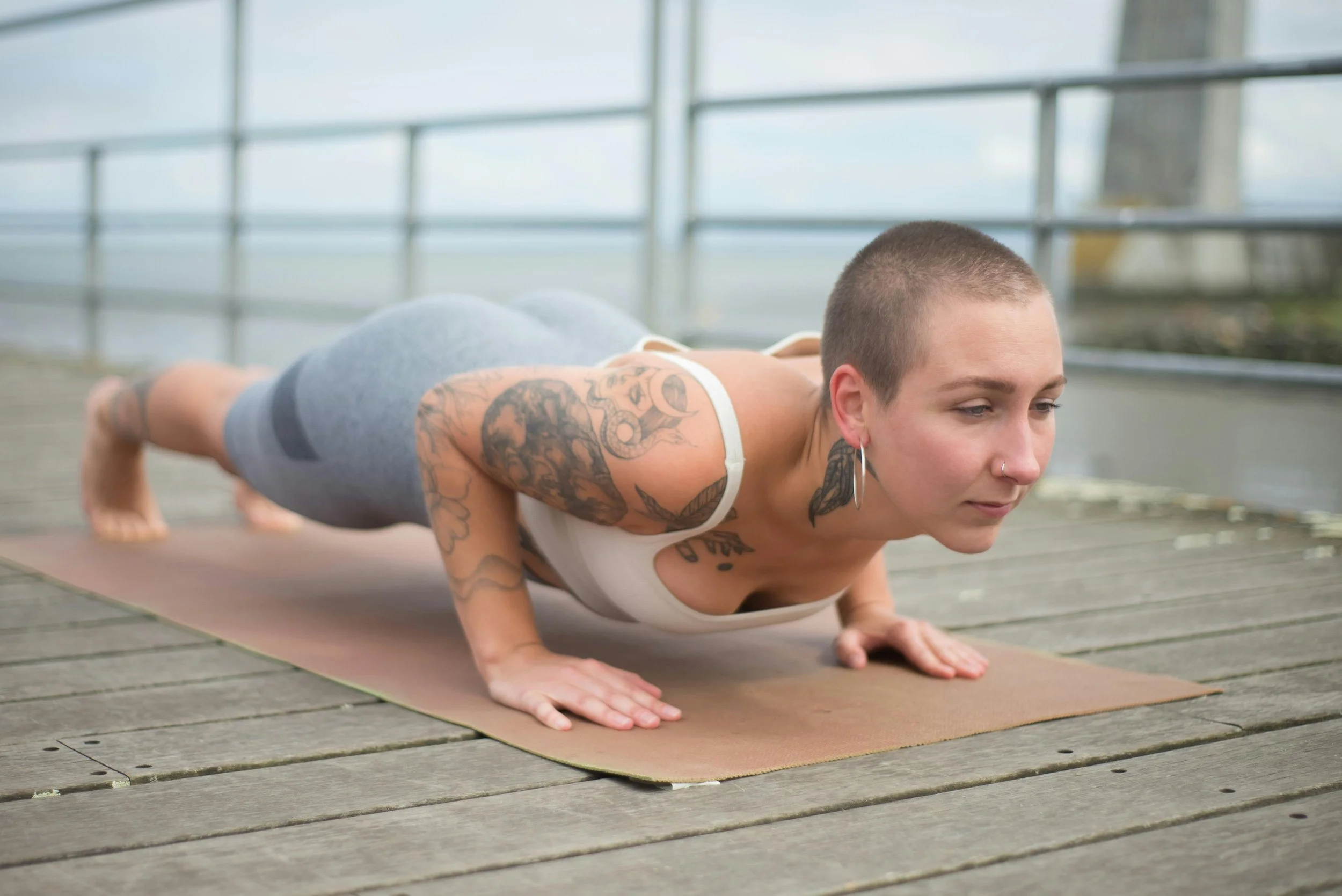Can Ashtanga Yoga Build Muscle?
Ashtanga yoga is renowned for its dynamic sequences, disciplined structure, and transformative effects on both mind and body. But can it actually help build muscle? While yoga is traditionally associated with flexibility and stress reduction, vigorous styles like Ashtanga also provide significant strength and endurance benefits.
Let’s dive into the science behind how Ashtanga yoga can support muscle development and explore findings from a key study, The Physiological and Psychological Effects of Ashtanga Yoga by Kimberly Gruber (2008), to understand its broader impact on fitness and well-being.
Muscle-Building Mechanisms in Ashtanga Yoga
Ashtanga yoga involves a flowing sequence of poses, linked with breath, that targets various muscle groups. Here’s how it supports muscle building:
Bodyweight Resistance Training
Ashtanga requires practitioners to lift and support their body weight in poses such as Chaturanga (Low Plank), Utkatasana (Chair Pose), and inversions. These movements engage multiple muscle groups, providing a resistance-training stimulus similar to calisthenics.Repetitive Muscle Engagement
The repetitive nature of the Ashtanga sequence, performed six days a week by seasoned practitioners, creates consistent muscular engagement. Over time, this leads to increased strength and muscular endurance.Core Activation
Many Ashtanga poses demand strong core engagement, such as Navasana (Boat Pose) and transitions like jumping back or through. This helps develop a stable and powerful core, essential for overall strength.Dynamic Movements
Ashtanga’s vinyasa flow incorporates dynamic transitions that challenge muscles, improve coordination, and build functional strength.
Key Findings from the Study by Kimberly Gruber
The 2008 study, The Physiological and Psychological Effects of Ashtanga Yoga, provides valuable insights into the physical and mental benefits of Ashtanga yoga. Here’s a summary of its findings:
Purpose of the Research
The study aimed to evaluate the physiological and stress-related psychological effects of Ashtanga yoga, hypothesizing that twice-weekly sessions over three months would positively impact physical fitness and perceived stress levels.Methodology
Participants: Seven untrained college-age females participated in Ashtanga yoga training, while a control group of five moderately active females engaged in traditional physical activity.
Training Protocol: Participants practiced 60–90-minute Ashtanga sessions twice weekly for three months.
Results
Muscular Endurance: Statistically significant improvements in upper body muscular endurance were observed in the yoga group.
Flexibility: Increased trunk flexibility was noted, along with evidence of improved cardiovascular fitness.
Stress Reduction: Participants experienced reductions in perceived stress and enhancements in mental health.
Implications
The study concluded that Ashtanga yoga provides a unique combination of strength, flexibility, and cardiovascular benefits. While it may not rival traditional strength training or aerobic exercise in isolation, Ashtanga yoga is highly efficient in training multiple aspects of physical fitness concurrently. This efficiency, coupled with its mental health benefits, makes it a compelling exercise modality for individuals seeking an all-in-one fitness practice.
Can Ashtanga Replace Traditional Strength Training?
While Ashtanga yoga builds muscular endurance and functional strength, it may not be the most effective option for increasing muscle mass (hypertrophy). Traditional strength training, involving heavier weights and targeted muscle isolation, is generally more effective for hypertrophy.
However, Ashtanga yoga excels in developing muscular endurance, functional strength, and overall body balance. It’s particularly beneficial for:
Building lean, toned muscles.
Enhancing joint stability and flexibility.
Developing core strength.
Improving muscular stamina for dynamic movements.
For individuals seeking a well-rounded fitness routine that incorporates strength, flexibility, and mindfulness, Ashtanga yoga is an excellent choice.
Benefits of Ashtanga Yoga for Muscle Building and Beyond
Efficient Full-Body Workout
Ashtanga yoga trains multiple muscle groups, cardiovascular endurance, and flexibility simultaneously, meeting the American College of Sports Medicine (ACSM) guidelines for physical fitness.Functional Fitness
Unlike isolated gym exercises, Ashtanga builds functional strength that translates into everyday activities and enhances athletic performance.Sustainable Practice
The repetitive structure of Ashtanga promotes steady progress over time, making it sustainable for long-term physical and mental growth.Mental Health Benefits
The focus on breath (Ujjayi) and mindfulness reduces stress and enhances mental clarity, complementing physical improvements.
How to Maximize Muscle Development in Ashtanga Yoga
Engage Your Muscles Intentionally
Focus on active engagement in each pose, such as pressing the hands firmly into the mat in Chaturanga or engaging the glutes in Warrior poses.Progress Through the Series
As you advance in Ashtanga, the Intermediate and Advanced Series introduce more strength-demanding poses, increasing the challenge for muscle development.Combine Yoga with Strength Training
If your goal is hypertrophy, complement your Ashtanga practice with targeted resistance training sessions.Maintain Consistency
Regular practice is key. Aim for at least 2–3 sessions per week to see steady improvements in strength and endurance.
Conclusion: Can Ashtanga Build Muscle?
Yes, Ashtanga yoga can build muscle, particularly in terms of muscular endurance and functional strength. While it may not be the fastest route to hypertrophy, its ability to simultaneously improve strength, flexibility, and cardiovascular health makes it a highly efficient form of exercise.
As highlighted in Kimberly Gruber’s 2008 study, Ashtanga yoga provides significant benefits for upper body endurance, flexibility, cardiovascular fitness, and mental health. This combination makes it a valuable practice for individuals seeking a holistic approach to fitness and well-being.
If you’re looking for a workout that strengthens your body, balances your mind, and aligns with your spiritual journey, Ashtanga yoga may be the perfect fit. Namaste.
Ready to Begin or Deepen Your Ashtanga Journey?
If you want to experience the challenge and growth of Ashtanga Yoga, check out our Flow With Us membership! Gain access to:
✅ Guided Ashtanga practice videos for all levels
✅ Breathwork and meditation sessions
✅ A supportive community to keep you motivated
Join Flow With Us today! and take your practice to the next level.
